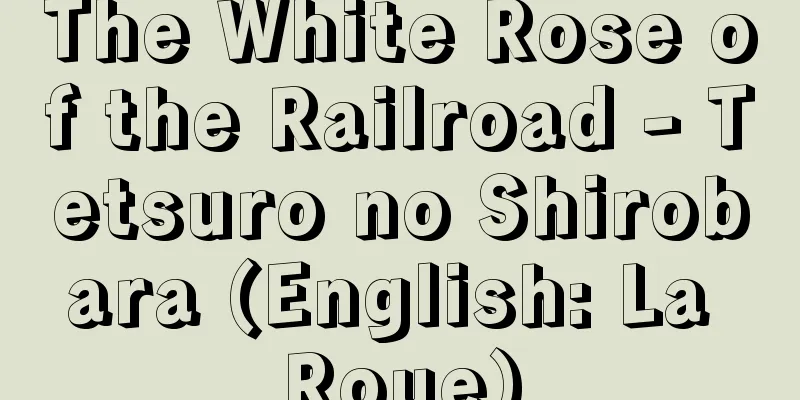Forms of government

|
Generally, it refers to the political form and form of government of each country. Aristotle divided the types of political forms into three forms: monarchy, aristocracy, and democracy, and named the corrupt forms of the above three types of political forms as despotism, oligarchy, and mob rule, respectively. This classification method has been used as a typical example of political forms since then, but with the emergence of new political forms in fascist and socialist countries in the 20th century and various political forms in the Third World, Aristotle's classical classification method is no longer necessarily sufficient to explain modern political forms. In prewar Japan, the term "political body" was used in a special political sense in connection with the term "kokutai." In other words, here, "kokutai" and "political body" were strictly distinguished, and the Japanese kokutai was a unique political community ruled by the Emperor of an unbroken line of emperors, and the position of the Emperor is sacred and inviolable, so the kokutai could not be changed. On the other hand, the political body differs depending on whether the country's political system is constitutional, autocratic, or republican, and therefore the political body can be freely changed. Minobe Tatsukichi criticized the distinction between kokutai and political body, arguing that the concept of kokutai is a historical and ethical concept but not a legal one, and thereby argued for the establishment of a parliamentary cabinet system based on party politics, but this was a minority opinion in Japan at the time, where bureaucratic politics was the norm. Moreover, the government argued that distinguishing between the national polity and the political system would lead to dangerous socialist ideology that sought to reform the national polity, and that criticism of politics in general was, ultimately, tantamount to criticism of imperial politics. As a result, democratic politics hardly developed under the Meiji Constitution. [Hiroshi Tanaka] [Reference] |Source: Shogakukan Encyclopedia Nipponica About Encyclopedia Nipponica Information | Legend |
|
一般には各国の政治形態、統治形態をさす。アリストテレスは、政体の種類を、君主制、貴族制、民主制の三つの形態に区分し、また上記3種の政体が堕落した政体をそれぞれに専制、寡頭制、衆愚制と名づけた。この区分法は、その後、政治形態の典型として今日まで用いられてきたが、20世紀に入って新たにファシズム諸国家、社会主義諸国家の政治形態や第三世界におけるさまざまな政治形態が現れるに及んで、アリストテレスの古典的区分法も、現代の政体を説明するのにはかならずしも十分なものとはいえなくなった。 ところで、戦前の日本では、この「政体」という語は、「国体」という語との関連で、政治上、特別な意味に用いられていた。すなわち、ここでは「国体」と「政体」とが厳密に区別され、日本の国体は万世一系の天皇が統治する万邦無比の政治共同体であり、天皇の地位は神聖・不可侵であるから国体は変更できない、これに対し、政体は国の政治のあり方が、立憲的か専制的かあるいは共和制的かによって異なり、したがって政体は自由に変更できる、というわけである。美濃部達吉(みのべたつきち)は、国体という概念は歴史的・倫理的概念ではあっても法学的概念ではないとして、国体と政体の区別を批判し、それによって、政党政治に基づく議院内閣制の確立を主張したが、官僚政治を基本とする当時の日本では少数意見にとどまった。そればかりか、政府は、国体と政体を区別する方法は国体の変革を目ざす危険な社会主義思想につながるものであり、また結局のところ、政治一般を批判することはとりもなおさず天皇政治を批判するものであるとして、自由主義者や民主主義者までをも厳しく取り締まることとなり、明治憲法下においては民主政治はほとんど発展しないという結果を招いた。 [田中 浩] [参照項目] |出典 小学館 日本大百科全書(ニッポニカ)日本大百科全書(ニッポニカ)について 情報 | 凡例 |
<<: Eucharist (English spelling)
Recommend
Enkanruikan box - Enkanruikan
A Chinese encyclopedia from the Qing Dynasty. Com...
Haskovo - Haskovo (English spelling)
It is the capital of Haskovo County in southern B...
Gaillard Castle - Gaillardjou
Château Gaillard is a castle in the town of Les An...
Shiba (Japanese lawn grass)
A perennial grass of the family Poaceae (APG clas...
candonbe
...The most famous and important type of tango is...
Archery - Kyūjūtsu
〘 noun 〙 One of the martial arts. The technique of...
One Emperor, One Deity System
…His name was Zhu Yuanzhang. He was the founder o...
Euphausia pacifica (English spelling) Euphausia pacifica
…Antarctic krill are abundant not only in the Ant...
Takesai - Chikusai
A kana zoshi from the early Edo period. Written b...
Masakuni Inaba
Year of death: July 15, 1898 (Meiji 31) Year of bi...
Sanada [town] - Sanada
A former town in Chiisagata County, bordering Ueda...
Gadolin, J.
... Periodic table Element symbol = Yb Atomic num...
Elster, JPLJ - Elster
…In 1900, PEA Lenard discovered that this phenome...
Transitional cell carcinoma
...therefore, they are further classified accordi...
Kishidai - Gantai
1782-1865 A painter from the late Edo period. Bor...









